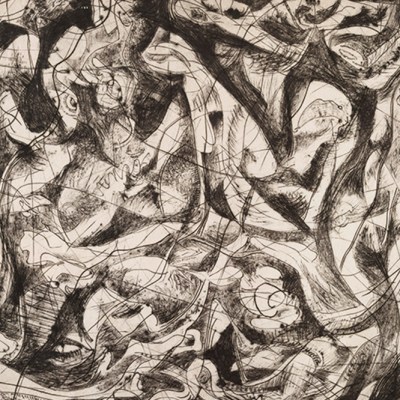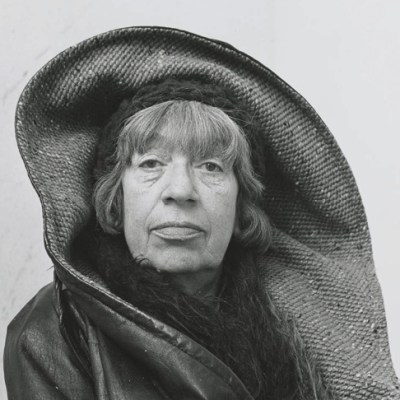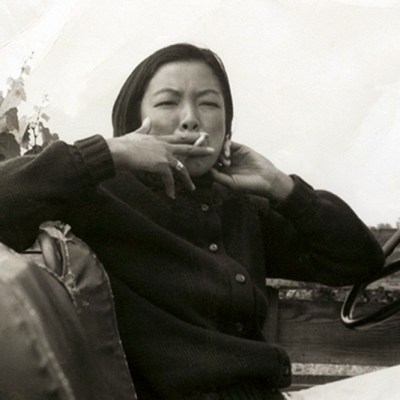The first painting you see on approaching ‘Action, Gesture, Paint’ at the Whitechapel Gallery is an expansive Helen Frankenthaler from 1974. April Mood stretches almost the width of the entrance – a long, horizontal canvas featuring fluid pools of thin acrylic paint. It could almost be a landscape: on the left, a large grey area drops clifflike towards a watery seam of violet and a yawning expanse of blue. Near the top, flashes of pink and ochre suggest clouds steeped in the rays of a rising sun. Up close, the subtle modulations of each colour field and the gentle brush, bleed and drip of one hue into another come to the fore. It’s a work well chosen to draw people in.
Once inside that first room, calm quickly gives way to clamour. Wherever you turn, something new and unexpected emerges into view – an experience that echoes the wider ambitions of the exhibition. For decades, Abstract Expressionism – along with other modern art movements – has been presented as the invention of an inspired few artists, almost exclusively white and male. Paintings by the likes of Jackson Pollock, Willem de Kooning, Hans Hofmann and Clyfford Still have been shown and celebrated widely for decades, while the creations of their many female counterparts were widely ignored. A few women have garnered more attention recently (Frankenthaler is the subject of a solo show at Museum Folkwang in Germany until March, and an exhibition of her woodcuts was at Dulwich Picture Gallery last year), but for every artist reintegrated into the canon there are dozens who remain overlooked and undervalued. This exhibition offers a glimpse into the vivid artistic ecosystem hidden behind reductive art-historical narratives.
April Mood (1974), Helen Frankenthaler. Courtesy ASOM Collection; © Helen Frankenthaler Foundation, Inc./ARS, NY and DACS, London 2022
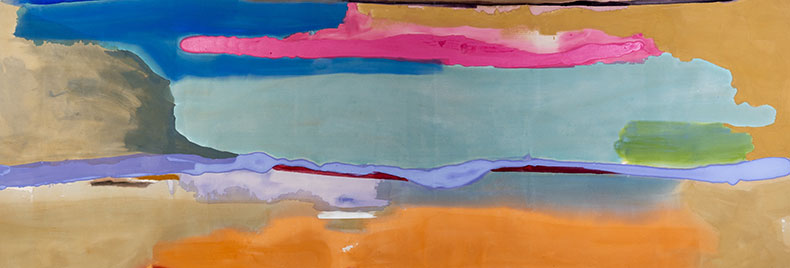
This is a very ambitious show, featuring more than 150 artworks by 80 artists from around the world, all loosely connected by their use of gestural abstraction. Rather than present the paintings chronologically or by region, the curators have grouped them into broad themes, with those in the first room demonstrating the sheer variety of ways in which artists experimented with (and clearly revelled in) the materiality of paint. To the left of the Frankenthaler, three paintings by British artist Sandra Blow (Painting (57), 1957; Composition I, 1960; and Creation, undated) – urgent, rough-edged compositions in moody blacks and reds – shoulder up against Audrey Flack’s Abstract Force: Homage to Franz Kline (1951–52), a colourful confusion of blocky forms and spattered, dribbling paint. On the right looms an inscrutable monolith of deep purple oils – Tomie Ohtake’s Roxo (Purple) from 1966. At the back, three pieces by Yuki Katsura stand out from the crowd: the first a veiny map of dark acrylic on bare canvas (Untitled, c. 1960); the second a fiery composition in sunflower orange and brown (Work, 1959); the third, a rich tapestry of textured yellow, fringed with fine tendrils of paint (Work, 1958–62).
Work (1959), Yuki Katsura. Courtesy the collection of Melissa M. Steward, New York, NY; © Estate of Yuki Katsura
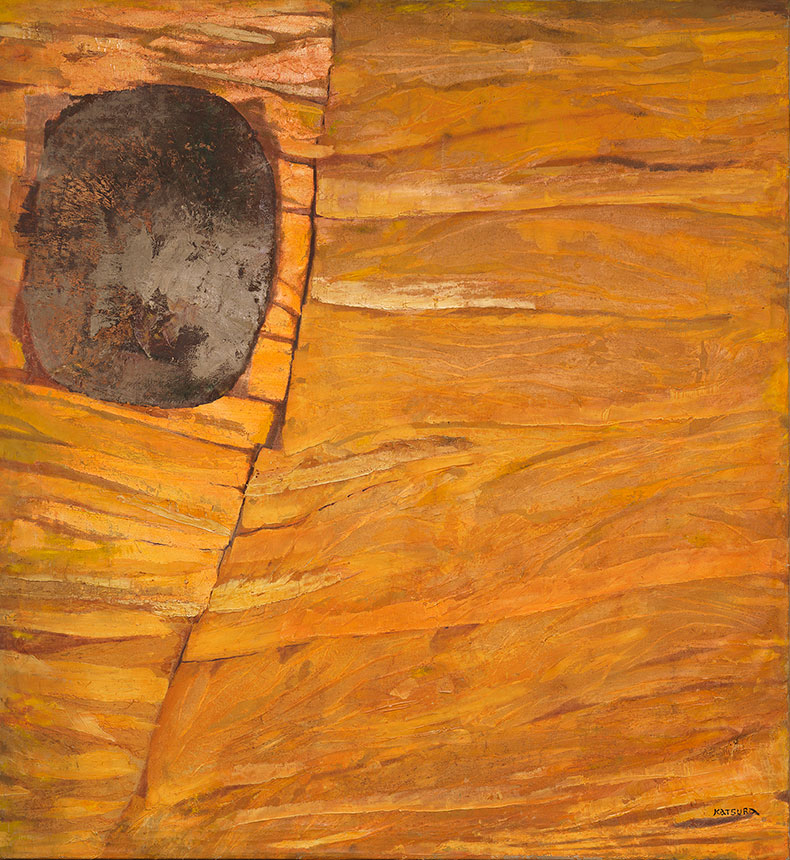
Other thematic groups are similarly wide-ranging. The area dedicated to myth, symbol and ritual includes Sarah Grilo’s Ni Un Día Más (1966), a mysterious double canvas swimming with letters, numbers, and phrases seemingly half-remembered from everyday life. There is also Behjat Sadr’s Untitled oil on wood from 1956, a small, pulsating composition of volcanic reds, blacks and blues which conjures up ancient creation myths, and Lee Krasner’s Bald Eagle (1955), an energetic collage which cannibalises discarded canvases by the artist and her husband Jackson Pollock, breathing new life into old work.
Woman: Red Sea, Dead Sea (1951), Ethel Schwabacher. Courtesy Courtesy the Levett Collection; © Christopher Schwabacher
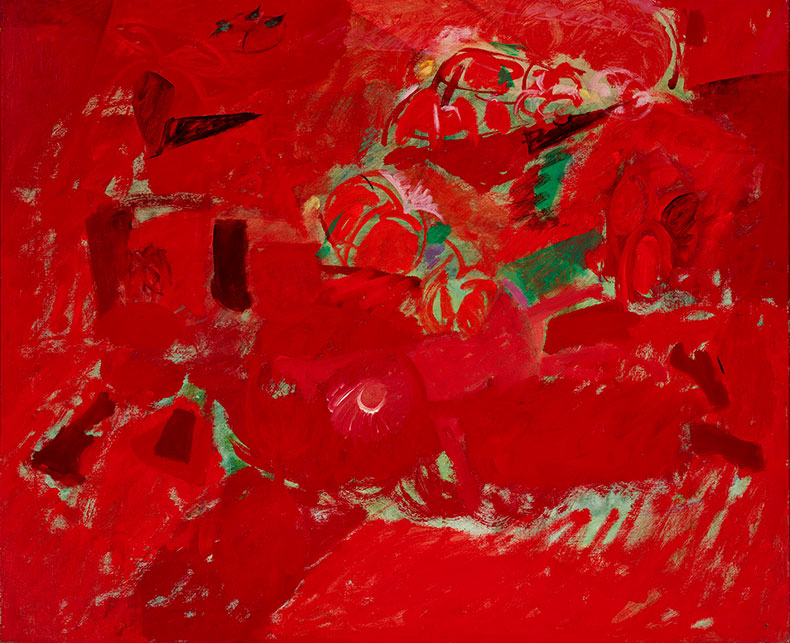
Some of the display choices seem a little arbitrary. It’s not immediately clear, for example, why Ethel Schwabacher’s blood red-paintings (Woman: Red Sea, Dead Sea, 1951 and Sankaty II, 1956) – inspired in part by her experiences of pregnancy and childbirth – should sit in this section and not alongside Martha Edelheit’s jagged Sacrificial Portrait (1958) upstairs under the theme of ‘Being, Expression, Empathy’. Both draw on women’s bodily experiences and desires, using bold colour and brushwork to create a sense of physical and emotional urgency. Nevertheless, the themes help introduce some core principles, interests and influences underpinning mid-century abstraction, and offer a way in to contemplating individual works. Miriam Schapiro’s Idyll II (1956), in the section dedicated to performance and gesture, is undeniably brought to life by her sweeping, quivering brushstrokes, which simultaneously trace her own expressive movements and coalesce to suggest a dynamic throng of colourful figures. Three paintings by Yvonne Thomas (To the Forest, 1960; Exploration, 1954; and Transmutation, 1956) in the ‘Environment, Nature, Perception’ group demonstrate how the artist modified her palette to match the mood of her surroundings, ranging from shadowy blues and greens in the first work, to warm, hazy hues in the latter.
Idyll II (1956), Miriam Schapiro. Courtesy the Levett Collection; © Estate of Miriam Schapiro/ARS, NY and DACS, London 2022
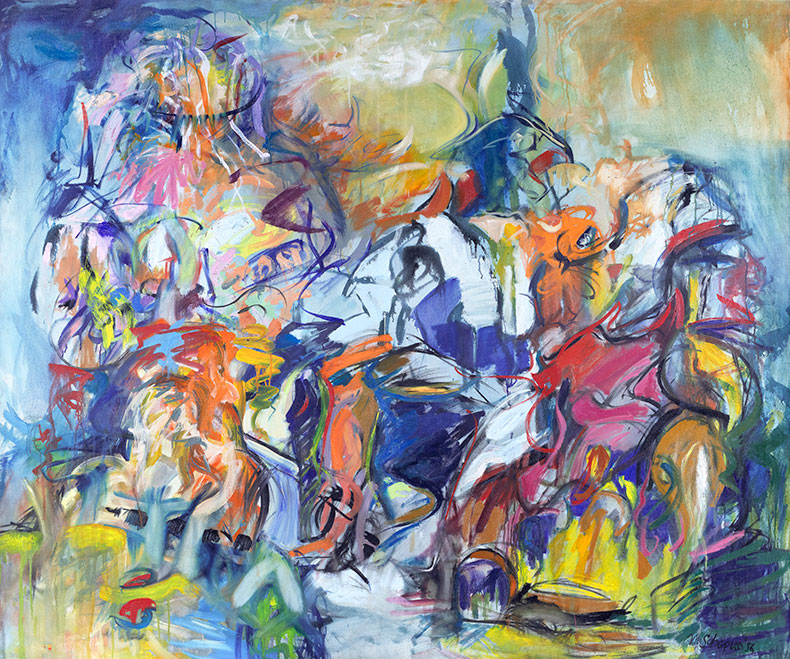
The accompanying captions are largely biographical, offering limited context for the individual works but providing interesting insights into the experiences and achievements of the women who made them. Alma Thomas, represented here by a single rusty-coloured canvas called Etude in Brown (Saint Cecilia at the Organ) (1962), created art at the kitchen table while holding down a teaching job, before becoming the first African American woman to have a solo show at the Whitney in 1972. The Ukrainian-born, self-taught artist Janet Sobel, who used pipettes to drizzle enamel paint on to canvas, showed her innovative works at Peggy Guggenheim’s gallery in 1945, where they were seen by Jackson Pollock and the influential art critic Clement Greenberg. Pollock created the first of his own iconic drip paintings just two years later, but it took significantly longer for Greenberg, Abstract Expressionism’s major champion, to acknowledge Sobel’s influence.
These are tantalising tales, but, with so many painters to introduce, we only get fleeting insights into each artistic story, and the busy hang doesn’t quite do justice to the individual works, which tend to nudge a little too close to their neighbours for comfort. But there’s something about this crowded curatorial approach that seems a deliberately provocative feature as much as a flaw. For too long, the history of gestural abstract art has been reduced down to a few famous, male, names. ‘Action, Gesture, Paint’ is a powerful and confident reminder of the scope and variety of the movement and the number of people who contributed. The real story is as messy and multifaceted as the paintings themselves, and it’s time we celebrate that.
‘Action, Gesture, Paint: Women Artists and Global Abstraction 1940–70’ is at the Whitechapel Gallery, London until 7 May.

